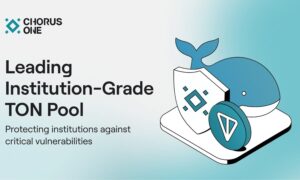In a world that thrives on digital connectivity, ensuring the security of our virtual existence has become more crucial than ever before. From personal information to financial data, our digital lives seem to hold an endless treasure trove for those with nefarious intentions. But fear not! We are here to equip you with all the tools and knowledge you need in this comprehensive guide to cybersecurity. Join us as we delve into the depths of cyber threats and discover foolproof methods to safeguard your online presence. Get ready to take charge of your digital life and embark on a journey towards impenetrable cybersecurity!
Introduction to Cybersecurity
In today’s digital age, it has become increasingly important for individuals and organizations to prioritize cybersecurity. With the rapid advancements in technology and the widespread use of the internet, our personal and professional lives have become more vulnerable to cyber attacks. From financial fraud to identity theft, cyber threats are a major concern that can have devastating consequences.
What is Cybersecurity?
Cybersecurity is defined as the practice of protecting computer systems and networks from digital attacks, theft, or damage through the implementation of various measures such as software, hardware, and best practices. It aims to safeguard sensitive data from unauthorized access or disruption while maintaining the confidentiality, integrity, and availability of information.
Types of Cyber Threats
In today’s digital age, our lives are becoming increasingly reliant on technology. We use it for communication, banking, shopping, and even storing sensitive personal information. However, with the benefits of technology comes the risk of cyber threats. These threats can come in various forms and can have severe consequences if not addressed properly.
1) Malware: Short for malicious software, malware is a broad term that encompasses a wide range of harmful programs designed to disrupt or damage computers and systems. This includes viruses, worms, trojans, ransomware, spyware, and adware. Malware can be spread through infected links or attachments in emails or by downloading files from untrusted sources.
2) Phishing: This type of cyber attack attempts to trick individuals into divulging personal information such as login credentials or credit card numbers by impersonating a legitimate entity via email or text messages. The most common form of phishing is “spear phishing,” which specifically targets individuals or organizations using tailored messages that appear authentic.
3) DDoS Attacks: Distributed Denial-of-Service (DDoS) attacks flood a system with massive amounts of traffic from multiple sources simultaneously until it becomes overwhelmed and unable to function normally. These attacks are often carried out by hackers aiming to bring down websites for competitive reasons or ransom demands.
4) Social Engineering: Unlike other types of cyber threats that involve technical methods like coding and hacking tools, social engineering exploits human psychology to gain access to information systems. Attackers manipulate people into providing sensitive information by pretending to be someone else or creating a sense of urgency.
5) Insider Threats: Not all cyber threats come from external sources; sometimes they can come from an organization’s own employees. Whether intentional or unintentional, insider threats occur when employees misuse their access privileges to steal data or harm their company’s network.
6) Advanced Persistent Threats (APT): APT refers to long-term targeted attacks that involve sophisticated techniques, often carried out by nation-state actors for political, economic, or social reasons. These attacks are highly complex and can go undetected for extended periods, making them difficult to defend against.
Common Ways Hackers Gain Access
In this digital age, protecting ourselves from cyber threats has become more important than ever. With the increasing number of cyber attacks happening every day, it is crucial to be aware of the common ways hackers gain access to our personal information. In this section, we will discuss four common methods used by hackers to gain unauthorized access to our devices and online accounts.
1. Phishing Attacks: This is one of the most prevalent techniques used by hackers to gain access to sensitive information. It involves sending fake emails or messages that appear to be from legitimate sources such as banks or government agencies. These emails often contain a sense of urgency, prompting the recipient to click on a malicious link or provide personal information like login credentials or credit card details. Once clicked, these links can install malware on your device and give hackers full access to your system.
2. Weak Passwords: It might seem obvious, but using weak or easily guessable passwords is still one of the top ways hacker’s gain access to our data. Many people use simple passwords like their pet’s name, birthdate, or “password123.” Hackers use various tools and techniques such as brute force attacks and dictionary attacks to crack these weak passwords and gain unauthorized entry into our accounts.
3. Unsecured Wi-Fi Networks: Public Wi-Fi networks are convenient for staying connected on-the-go; however, they also pose serious security risks if not properly secured. Hackers can easily intercept unencrypted data transmitted over these networks and capture sensitive information such as usernames, passwords, and financial details. They can also create fake hotspots with names similar to popular networks in an attempt to trick users into connecting willingly.
4.Ensuring Operating System (OS) Updates: Failure to update your operating system regularly leaves your device vulnerable to various types of cyberattacks. Hackers often exploit known vulnerabilities in outdated systems using sophisticated hacking tools that allow them easy entry into devices without the user even being aware. Make sure to regularly update your OS and install security patches to stay protected from these types of attacks.
Best Practices for Protecting Your Devices and Data
In today’s digital age, the security of our devices and data has become an increasingly important concern. With cyber threats constantly evolving and becoming more sophisticated, it is crucial to take proactive measures to protect our personal information and devices from potential harm. This section will discuss some best practices for safeguarding your devices and data, ensuring that you can navigate the digital world with peace of mind.
1. Keep Your Software Up to Date:
One of the simplest yet most effective ways to protect your devices is by keeping all software and operating systems up-to-date. This includes not only your computer but also your mobile devices, routers, and other connected gadgets. Manufacturers regularly release updates that contain security patches to fix vulnerabilities that could potentially be exploited by hackers. Therefore, it is essential to install these updates promptly to ensure that your device’s security remains intact.
2. Use Strong Passwords:
Passwords are the first line of defense against unauthorized access to your accounts and devices. Therefore, it is important to use strong passwords that cannot be easily guessed or cracked by cybercriminals. A strong password should be at least 10 characters long and include a mix of upper and lowercase letters, numbers, and special characters. It is also recommended to use different passwords for each online account or device, as in case one gets compromised; others will still remain secure.
3. Enable Two-Factor Authentication:
Two-factor authentication adds another layer of security on top of just a password by requiring users to enter a code sent via text message or generated through an app on their phone before logging into an account or device. This provides an extra level of protection against potential hacking attempts as even if someone manages to obtain your password through phishing or other means; they would still need physical access to your phone or email account.
4.Install Antivirus Software:
Antivirus software helps in detecting and preventing malware infections on your devices. Make sure you have good antivirus software installed and regularly update it to protect against the latest threats. Additionally, be cautious when clicking on links or downloading content from unknown sources, as they may contain viruses or malicious software.
5. Be Wary of Public Wi-Fi:
Using public Wi-Fi networks can be a convenient way to stay connected, but it also poses significant security risks. Hackers often target these networks to intercept sensitive data transmitted by users. Therefore, avoid accessing sensitive information such as banking or personal accounts while using public Wi-Fi. Instead, use a virtual private network (VPN) to encrypt your internet connection and keep your data safe.
Importance of Strong Passwords and Two-Factor Authentication
A strong password serves as your first line of defense against cybercriminals. It acts as a barrier between your personal information and unauthorized access. Without a strong password, hackers can easily gain access to your online accounts and steal sensitive information such as financial data or personal details.
So, what makes a password strong? A strong password should be at least 12 characters long and include a combination of upper and lower case letters, numbers, and special symbols. It is also recommended to use different passwords for each account to minimize the impact in case one of them gets compromised.
Using two-factor authentication adds an extra layer of security to your accounts. This method requires users to provide an additional form of verification (e.g., a code sent via SMS or email) apart from their password when logging in. Even if someone manages to get hold of your password, they will not be able to access your account without the second factor of authentication.
One might argue that setting up complex passwords and using two-factor authentication can be time-consuming and inconvenient. However, the inconvenience caused by these measures is nothing compared to the damage that can be done if our accounts get hacked or compromised.
Aside from protecting our personal information, having strong passwords and using two-factor authentication also helps safeguard businesses from potential hacking attempts. Cybersecurity measures are particularly critical for organizations that handle sensitive data such as customer information or trade secrets.
Tools and Software for Enhanced Security
In today’s digital landscape, it is essential to take all necessary precautions to protect your personal information and sensitive data. As the number of cyber threats continues to rise, it has become more critical than ever before to enhance our security measures. Fortunately, there are various tools and software available that can help us stay protected against potential attacks.
1. Antivirus Software:
One of the most basic yet crucial tools for enhanced security is antivirus software. These programs work by scanning your computer for any malicious software or viruses and eliminating them before they can cause any harm. It is essential to keep your antivirus software updated with the latest virus definitions to ensure maximum protection.
2. Virtual Private Network (VPN):
A VPN is a secure way to browse the internet while keeping your online activities hidden from prying eyes. It encrypts your internet connection, making it challenging for anyone to intercept or access your data. This tool is particularly useful when connecting to public Wi-Fi networks, as they are often vulnerable to hackers.
3. Password Managers:
With so many online accounts and passwords, it can be challenging to keep track of them all securely. That’s where password managers come in handy. They store all your login credentials in an encrypted vault, requiring you only to remember one master password. This eliminates the need for using weak or repeated passwords, enhancing the security of your accounts.
4. Two-Factor Authentication (2FA):
Two-factor authentication adds an extra layer of protection by requiring two forms of identification before granting access to an account or system. This could include a combination of something you know (password) and something you have (phone). Many websites and platforms now offer this feature for added security.
5.Ubiquitous Security Tools:
These include features such as firewalls, intrusion detection systems (IDS), and intrusion prevention systems (IPS). Firewalls act as gatekeepers between networks, filtering out suspicious traffic while allowing legitimate ones through.
IDS and IPS, on the other hand, monitor and analyze network traffic to detect any malicious activities.
6. Encryption Software:
Encryption software encodes information in such a way that only authorized parties can access it. This is particularly useful for sensitive data like financial information, as it adds an extra layer of protection in case of a data breach.
Steps to Take in Case of a Security Breach
In today’s digital age, security breaches and cyber attacks have become increasingly common. From large corporations to individual users, everyone is vulnerable to potential threats in the online world. As such, it is crucial to be prepared and know what steps to take in case of a security breach.
Step 1: Remain Calm and Assess the Situation
The first thing you should do if you suspect a security breach has occurred is to remain calm. Panicking can lead to making hasty decisions which may only worsen the situation. Take a few deep breaths and assess the situation objectively. Determine what type of information may have been compromised and how severe the breach could potentially be.
Step 2: Change Your Passwords
One of the first things hackers often target during a security breach are passwords. It is advised that you immediately change all your passwords, especially those for sensitive accounts like your bank or email accounts. Use strong and unique passwords for each account, preferably with a combination of uppercase and lowercase letters, numbers, and special characters.
Step 3: Contact Your Financial Institutions
If there is any chance that financial information may have been accessed during a security breach, contact your bank or credit card company immediately. Ask them to monitor your accounts for suspicious activities or transactions.
Step 4: Update Security Software
Make sure all your devices are equipped with up-to-date antivirus software and firewalls as these provide an extra layer of protection against cyber threats. If you do not already have them installed, now would be an opportune time to invest in quality cybersecurity software.
Step 5: Inform Relevant Parties
It is crucial to inform relevant parties about the security breach, especially if it involves personal data being compromised. This includes notifying your employer (if applicable), internet service provider (ISP), social media platforms, etc., so they can also take necessary actions on their end.
Step 6: Monitor Your Accounts Regularly
Be vigilant and regularly monitor all your accounts for any suspicious activities or transactions, even after taking the above steps. If you notice anything unusual, report it immediately to the respective authorities.
Step 7: Seek Professional Help
In case of a severe security breach, seeking professional help from a cybersecurity expert may be necessary. They can assist in identifying the source of the breach and provide guidance on further steps to take in order to prevent future incidents.
Stay Vigilant, Stay Safe
In today’s digital age, the need for cybersecurity has become more crucial than ever. With the increasing number of online threats and cyber attacks, it is important to stay vigilant and take necessary precautions to protect our digital life. This comprehensive guide to cybersecurity has covered various aspects of protecting your digital life. To ensure your safety and security in the digital world, here are a few key points to remember:
1. Keep your devices updated: Make sure all your devices are running on the latest software versions with up-to-date security patches. These updates often contain essential security fixes that can protect you from potential cyber attacks.
2. Strong passwords: The first line of defense against hackers is a strong password. Use unique and complex passwords for all your accounts and change them regularly. Consider using a password manager to store your login credentials securely.
3. Be cautious while clicking links or downloading attachments: Be wary of suspicious emails or messages asking for personal information or containing strange links or attachments. These could be phishing attempts trying to steal sensitive data from you.
4.Compact Cybersecurity Tools: Utilize simple yet effective tools like antivirus software, firewalls, and virtual private networks (VPNs) on all your devices to safeguard against malware, ransomware, and other cyber threats.
5.Practice safe browsing habits: While surfing the internet, be cautious about the websites you visit and avoid entering personal information on unsecured websites (those with “http” instead of “https” in their URL). Also, refrain from using public Wi-Fi without encryption as it can expose your data to potential hackers.
6.Educate yourself about current threats: Stay informed about recent security breaches and new types of cyber attacks by following reputable sources such as cybersecurity blogs or news outlets.
7.Backup important data regularly: In case of any unfortunate incident like a virus attack or system crash, having backups of essential files can save you from a lot of trouble. Keep multiple copies of your backups, preferably in different locations or on cloud servers.
Conclusion
As technology continues to advance, so do the threats to our digital life. It is crucial that we take steps to protect ourselves and our personal information online. By following the tips and practices outlined in this comprehensive guide, you can significantly reduce your risk of becoming a victim of cyber attacks. So remember to stay vigilant, use strong passwords, keep your software up-to-date, and be cautious about what you share online. Together, we can create a safer and more secure digital world for everyone.



































